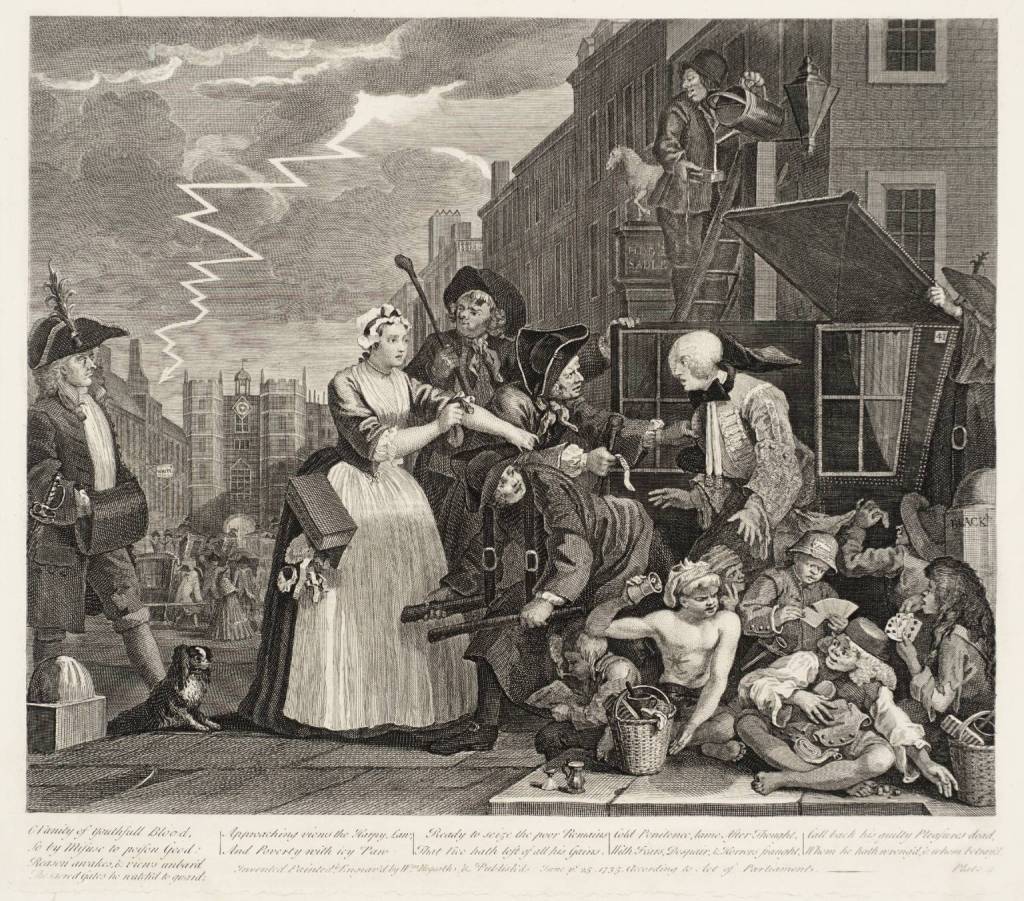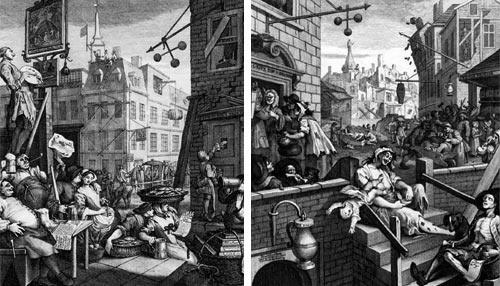HARRIET LEIGH review’s Hogarth’s cartoons and engravings in the Cartoon Museum.
The exhibition of Hogarth’s cartoons and engravings in the Cartoon Museum in Little Russell Street is small, concise but effective in its portrayal of a significant eighteenth-century artist. The first to create what was known as the ‘cartoon’, Hogarth gives us a peek into London with a particularity and precision that gives the viewer a key-hole into the past. At a time when most of the working-class population were illiterate, these images were designed to tell a story through imagery instead.

For this reason, perhaps, Hogarth is very didactic in the pictures he presents; in nearly every single cartoon he produced we can read a moral message for the observers. Two of his most well known images, Beer Street and Gin Lane (1751), placed in the centre of the room, highlight the perils of drinking gin compared to beer. Hogarth does not spare the gruesome details: we see the ribs of a skeletal ballad-seller, blind from alcohol, sitting next to an insensible mother who neglects her child. Hogarth fills each image with so many details one could look all day and still find something new with a returning glance. ‘Gin Lane’ is filled with a morbidity that emphasises the dangers of gin, something Hogarth greatly wanted to highlight to his audience. Later in 1751, Hogarth and Henry Fielding were successful in passing the Gin Act, which saw the duty tax on the sale of the spirit doubled. This shows that Hogarth was not only a preacher for morals, he was also politically active and committed to making life better for Londoners. His compassion and empathy was probably due to his childhood poverty and subsequent rise, against all odds, to success. Living on the streets among London’s underprivileged, he witnessed first hand how easy it was to spiral to the very depths of society and this contextual detail is revealed in the many pieces of biographical information displayed among the images.
The exhibition is contained in a single room, with the cartoons and engravings placed on the walls and a temporary board in the centre. There is no need to go in any particular order through Hogarth’s works as, though arranged chronologically, each piece can be admired without seeing any previous work. Many of the images are arranged in small collections, for example The Harlot’s Progress (1731); a series of six images that is one of the first collections you come to when walking around the exhibit clockwise. This selection tells the story of a young girl, Moll, who comes to London to find her fortune but is enticed, or forced, into the sins of the city – prostitution and alcohol – which eventually cause her downfall. Again, Hogarth underlines the dangers of reprehensible behaviour in his pedagogic images. It is a technique used frequently by the artist, as seen in The Rake’s Progress (1735), Industry and Idleness (1747) and The Four Stages of Cruelty (1751).
As well as these moral pictures showing the hard and painful life of the working class in London, Hogarth also comments on the financial problems of the time, such as the fiscal break down in The South Sea Bubble (1721). In addition, most of his pictures feature religious teachings from the Bible, both in the image itself and in the writings around the border. Hogarth’s work is filled with symbolism, so much so that even the outer edges of the engravings are detailed with meaningful imagery, such as skeletons and cornucopias (Industry and Idleness) that show the contrast in fortune between laziness and hard work.
It is very easy to find yourself lost in the images of this exhibition, and the simplicity of the layout makes it a pleasure to walk around focusing entirely on the images. There is plenty of detail in each image so you feel fully informed about the drawing and its significance. Though the museum has a focus on entertaining children, it maintains a professional atmosphere and for the most part it is a peaceful environment and a pleasure to walk around.
Where: The Cartoon Museum
35 Little Russell Street
London
WC1A 2HH
0207 580 8155
Opening Mon – Sat: 10.30 – 17.30 (inc. Bank Holidays)
Hours: Sun 12.00 – 17.30





